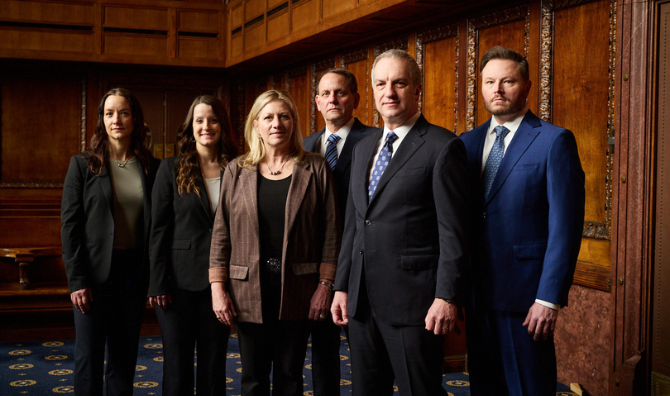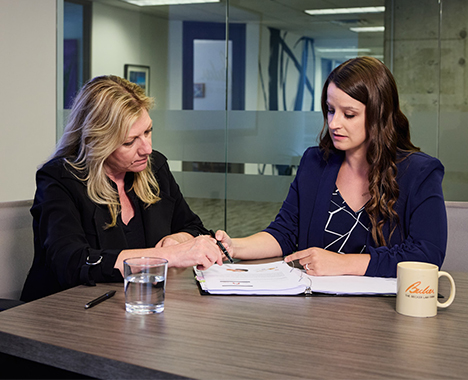Every property owner has a duty to maintain reasonably safe grounds. Grounds should be regularly inspected and maintained, and if an issue does arise, it should be handled as quickly as possible.
If it cannot be fixed immediately, a warning sign should be placed in the location to warn others. When property owners fail to uphold their duty to visitors, customers, and guests, this can have disastrous results. Catastrophic injuries and even death can result from a hazardous condition on a property.
The Becker Law Firm is committed to the pursuit of full justice on behalf of individuals and families across Ohio who have suffered harm as a result of property owner negligence and wrongdoing.
Our premises liability lawyers represent clients across the state from offices in Elyria and Cleveland, and we can come to your home or hospital room to talk to you about your options, your rights, and how we can help.
Call 216-621-3000to arrange your free consultation with one of our legal professionals. We’re ready to listen and offer our support.
Ohio Premises Liability Claims: Slips, Trips, and More
Types of Premises Liability Incidents We Handle
Slip and fall accidents are the most common type of premises liability claim, but there are a number of other accidents and injuries that may warrant a lawsuit against a negligent property owner.
Our Ohio premises liability lawyers can take on cases involving:
- Slip and fall accidents
- Falls from heights
- Elevator and escalator accidents
- Stairway accidents
- Physical and sexual assault (related to security negligence)
- Swimming pool accidents
- Dog bites and animal attacks
- Fires and explosions
- Toxic exposure
- Theme park accidents
Litigating these kinds of cases can often be challenging and require real tenacity, something our premises liability attorneys at The Becker Law Firm pride themselves on having.
Every premises liability matter is handled on a case by case basis. Put our powerful team in your corner so your case is presented in a clear and compelling manner. Call our firm at 216-621-3000 today.
Victory Against Negligence: A Cleveland Premises Liability Success Story
How We Overcame Challenges in a Complex Case
One of our firm’s clients, represented by Romney Cullers, was an 80-year old woman who stopped to buy cigarettes at the store of a gas station chain. As she approached the store’s door, she fell. Her face hit the pavement awkwardly, which broke her neck. Tragically, she died 11 months after her accident.
At first, it didn’t seem like we would be able to make a case on behalf of her and her family. In Ohio, you have to be able to say in your complaint why you were injured—how the neglected property caused your injury—or the judge would issue a Summary judgment to throw out the case. Our client couldn’t say why she fell because she couldn’t remember falling; her injury wiped out her memory of the accident.
We decided we weren’t going to just give up. The gas station where our client was injured was across the street from a car dealership and they were kind enough to allow our attorney to sit in their showroom and watch the gas station for hours on end. Our attorney noticed that people kept stumbling on a raised step as they tried to enter the door where my client had been injured.
The step that was tripping people was really a half-step. It was hard to notice and people would catch their toes on it. Sometimes they stumbled; other times they went sprawling. It happened pretty regularly. It stood to reason that this step might have caused my client’s fall and injury. It also stood to reason that someone else might have been injured by a similar fall. Finding that person, though, would be like looking for a needle in a haystack.
One of the things we noticed while watching the gas station was that the members of the congregation of a large nearby church would often stop at the station’s store before and after services. Our client’s family couldn’t afford to advertise to the entire city to look for someone who might have been hurt on this store’s raised step, but they could afford to place an ad in the bulletin of that nearby church. That ad paid off. A person contacted us and we got an affidavit saying he had been injured because he tripped on the store’s raised step.
After some additional research, we realized that the half-step that likely caused our client’s injury wasn’t a fluke of construction with this one store. It was part of the standard design for the all of the gas station stores in the chain. Every station in this chain throughout Ohio had this same slightly raised step—all of them, except for two. At those two stations, their local owners had had the step removed because it had been causing people to trip. The removal of the step at those two stores was a tacit acknowledgment that the company knew about this design problem with their stores.
Armed with these two pieces of information, the affidavit from the person who had been injured from falling on the raised step at the store where our client was injured, and information showing that the company was aware of the design flaw that was causing people to trip, we were able to get around my client’s memory loss and persuade the judge not to throw out the case in Summary judgment. And, while we couldn’t undo my client’s injury, we were able to win our negligence claim against the gas station chain for her children and grandchildren.



